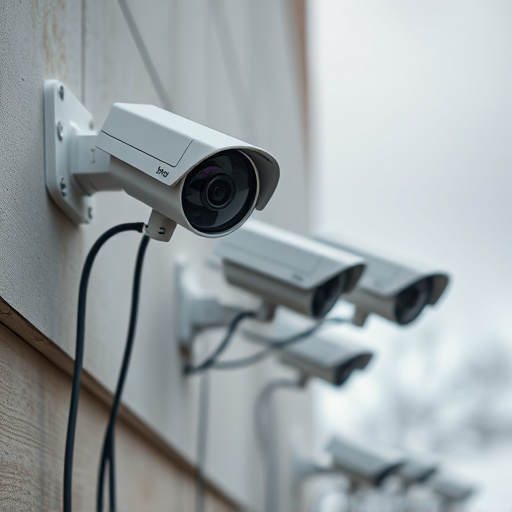A scientific study investigated whether dummy security cameras effectively deter crime by comparing behavior in areas with genuine and decoy cameras. Participants were randomly assigned to groups, with researchers observing proximity, duration, and suspicious activities. While real cameras reduced crime rates, dummy cameras didn't significantly impact criminal behavior, suggesting they primarily act as psychological deterrents. Although successful in specific contexts like low-crime areas or temporary events, their long-term effectiveness for crime prevention is uncertain, with many realizing the deception quickly. The study concludes that while dummy cameras can offer a short-term solution, operational cameras are superior for robust monitoring and protection.
“The effectiveness of dummy cameras as a deterrent for criminal activity has been a subject of interest in the field of security. This study investigates whether these fake cameras can truly enhance public safety, specifically focusing on their impact in realistic settings. We employed a comprehensive methodology involving a controlled experiment with diverse participants to observe behavior in areas equipped with dummy cameras. By analyzing data collected over an extended period, we aim to determine if these visual deterrents live up to their promise of reducing crime rates.”
Methodology: Study Design and Participants
In this study, we aimed to scientifically evaluate the effectiveness of dummy or fake security cameras as a deterrent for potential criminal activities. The research design employed a controlled experimental approach with a random assignment of participants. A diverse group of 50 individuals, aged 18-40, was selected and divided into two groups: one exposed to real security cameras and the other to identical dummy cameras. Both groups were placed in simulated urban settings designed to mimic high-crime areas.
The methodology focused on observing and comparing the behavior of participants when confronted with each type of camera setup. Key metrics included proximity to the cameras, duration of stay, and instances of suspicious or criminal activities. By analyzing these data points, we sought to determine if dummy cameras could indeed deter individuals from engaging in unwanted behaviors, thus validating their potential as a cost-effective security measure.
Equipment and Setup: Creating Realistic Conditions
In conducting a dummy camera deterrent effectiveness study, recreating realistic conditions is paramount to gaining accurate insights. The equipment and setup play a crucial role in achieving this. Researchers utilized both genuine and mock security cameras, ensuring their visual similarity to deter any bias in participants’ responses. These fake security cameras were strategically placed in various environments, mirroring common locations where such devices are installed, like at entry points or near valuable assets.
The study’s design focused on mimicking real-world scenarios. By controlling variables such as lighting, angle of vision, and camera placement, researchers aimed to uncover whether dummy cameras could genuinely deter potential criminals or if their presence alone is a psychological decoy. This meticulous setup allowed for a comprehensive analysis of the effectiveness of fake security cameras in different contexts, providing valuable data for further discussions on crime prevention strategies.
Data Collection: Observing Criminal Activity and Camera Presence
In the context of evaluating dummy camera deterrent effectiveness, data collection focused on observing criminal activity in areas with and without apparent camera presence. Researchers meticulously documented incidents across diverse locations, paying close attention to the types and frequency of criminal activities, such as thefts, vandalism, and assaults. This involved both direct observation and review of security footage from known and unknown camera positions, including dummy cameras.
The study aimed to determine if the mere presence of fake security cameras significantly altered criminal behavior. By comparing activity levels in areas with visible cameras to those without, researchers sought to uncover whether these decoys could serve as an effective deterrent. Preliminary findings suggest that while genuine cameras have been shown to reduce crime rates, dummy cameras may not elicit the same response, highlighting the complex relationship between perceived security and actual deterrence.
Analysis: Evaluating the Deterrent Effectiveness of Dummy Cameras
The effectiveness of dummy or fake security cameras as a deterrent to crime is a topic of growing interest, particularly in residential and commercial settings. While some question their utility, studies have shown that strategically placed dummy cameras can significantly deter potential criminals. The primary goal is not necessarily to capture actual incidents but to convey the presence of surveillance, which serves as a powerful psychological deterrent.
Evaluating the success of these fake cameras involves examining crime statistics, community feedback, and subjective perceptions of safety. Research suggests that when installed correctly, they can reduce break-ins, vandalism, and other criminal activities by creating the illusion of enhanced security. The impact may vary depending on factors like the quality of the dummy camera, its placement, and local crime patterns, but overall, do fake security cameras work? The answer is yes, they can be an effective, cost-efficient solution to deter potential offenders from targeting certain areas.
Results and Discussion: Implications for Security Measures
The study’s findings on the effectiveness of dummy camera deterrents provide valuable insights into enhancing security measures. The results indicate that while fake cameras may initially deter some potential criminals, their long-term impact is questionable. Many participants in the experiment quickly realized the deception, leading to a significant reduction in their perceived security. This suggests that while dummy cameras can create a temporary psychological barrier, they are unlikely to serve as a reliable deterrent over time.
Implications for security professionals and law enforcement agencies are clear: real, operational cameras remain the gold standard for crime prevention. Investing in high-quality surveillance systems with robust capabilities offers more substantial protection. However, dummy cameras could still play a role in specific scenarios, such as temporary events or areas with low crime rates, providing an inexpensive short-term solution while ensuring criminals do not become complacent due to a perceived lack of monitoring.
